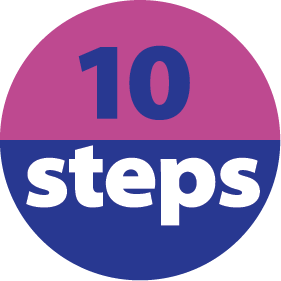Creating Your Advocacy Plan
This is a 10-step process that will help assure your advocacy success. A council or group of local teachers who want to move forward on this campaign should take the time to tailor this plan accordingly.
 10 Steps to Your Advocacy Plan
10 Steps to Your Advocacy Plan
- Identify an advocacy challenge or opportunity.
- Determine the key audiences.
- Find out what those audiences currently know or perceive.
- Determine how each audience receives its information.
- Establish measurable objectives for each audience.
- Define message points for each audience.
- Determine the communication activities to deliver those messages.
- Decide what resources are necessary to complete each activity.
- Establish a timeline and responsible party for each activity.
- Evaluate whether you have reached your objectives.
An Example
This sample plan will guide you through completing the 10-step process.
- Advocacy Challenge: To convince the school board to provide adequate time for social studies instruction and professional development.
- Key Audiences:
- School Board Members (primary)
- People who support the school board members (secondary)
- School staff (secondary)
- Other elected leaders (secondary)
- State Legislature, Congress and the Media
- Determine What They Know
- Read past Board meeting minutes
- Review past election materials for comments on social studies
- Read newspaper coverage of Board meetings
- Hold individual interviews with Board members
- Determine How They Receive Their Information
- Interviews (based on what is discovered, new audiences may be added. For example, if members of the Board indicate that they only listen to recommendations from the superintendent then he/she is added to your audience list.)
- E-mail or regular mail.
- Measurable Objectives
- Each Board member will be given a copy of NCSS's curriculum standard strands and performance expectations.
- An article on the value of social studies will be published in the state school board association journal.
- Eighty percent of the Board will attend a seminar conducted by local social studies educators.
- Eighty percent of the Board will attend a social studies class in a local school.
- Bring the state social studies specialist to meet with the school board.
- Message Points
- Social studies education is more important than ever.
- Social studies education prepares students for college, career, and civic life.
- Social studies holds our society together.
- Communication Activities
- Prepare a cover letter and send a copy of the NCSS curriculum standard strands and performance expectations.
- Make a follow up phone call to assure it was received.
- Submit an article to the state school boards association.
- Deliver an invitation (written or verbal) to the conference.
- Develop a plan with the schools to have board members observe a social studies classroom.
- Deliver an invitation (written or verbal) to participate in the observation.
- Resources
- Time to compose and disseminate the letters.
- Postage.
- Timeline
- Indicate completion time for each activity.
- Evaluation
- Is article published?
- Do they express an interest in the NCSS curriculum standards?
- Do they go on the observation?
- The vote.